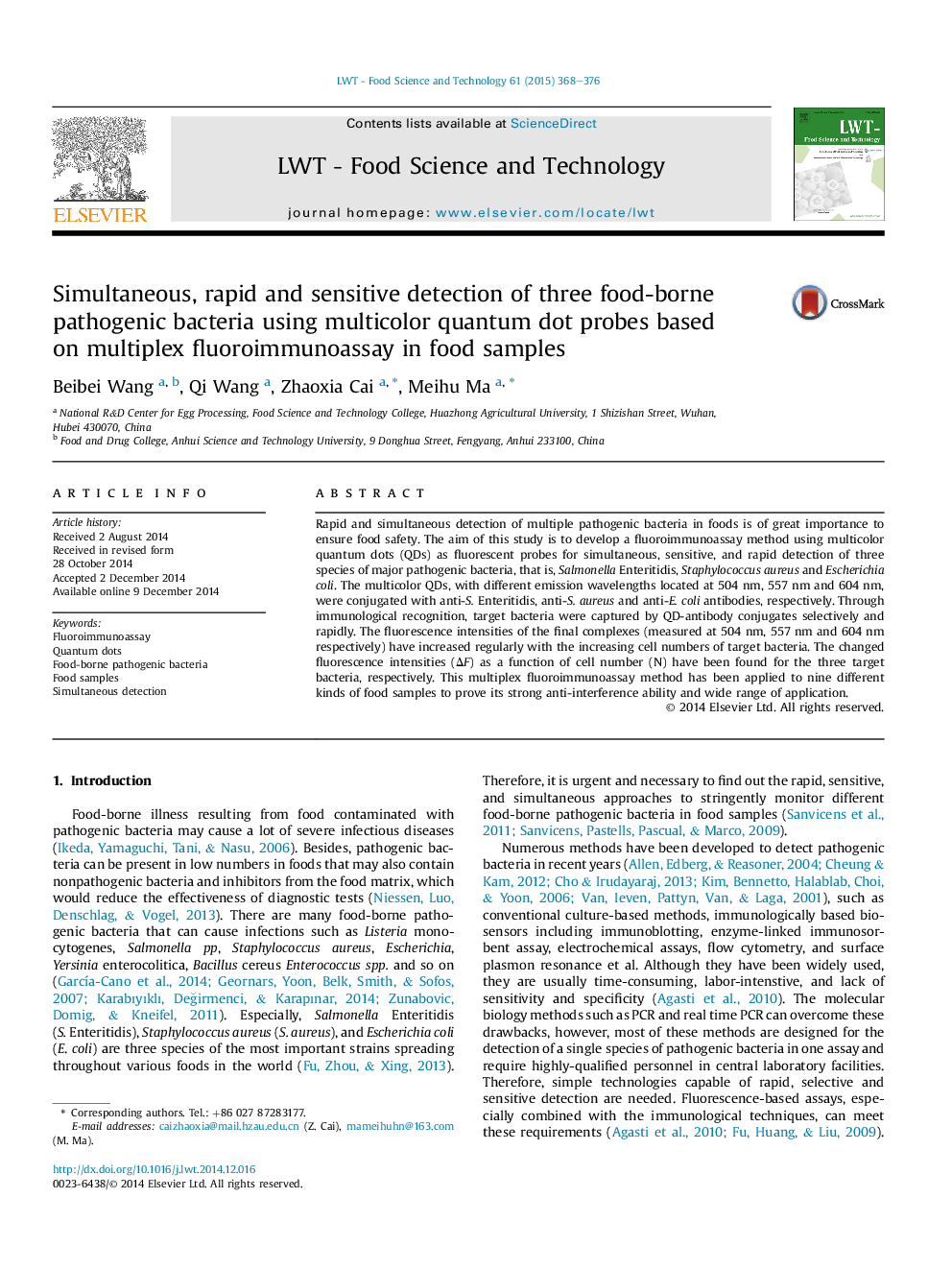| Article ID | Journal | Published Year | Pages | File Type |
|---|---|---|---|---|
| 6401153 | LWT - Food Science and Technology | 2015 | 9 Pages |
â¢We develop a fluoroimmunoassay method to detect three pathogens simultaneously.â¢The fluorescence intensities quenches linearly with the log count of bacteria increases.â¢The function have been found for quantitative detection of the three target pathogens.â¢This method is satisfactorily applied to nine different kinds of food samples.
Rapid and simultaneous detection of multiple pathogenic bacteria in foods is of great importance to ensure food safety. The aim of this study is to develop a fluoroimmunoassay method using multicolor quantum dots (QDs) as fluorescent probes for simultaneous, sensitive, and rapid detection of three species of major pathogenic bacteria, that is, Salmonella Enteritidis, Staphylococcus aureus and Escherichia coli. The multicolor QDs, with different emission wavelengths located at 504 nm, 557 nm and 604 nm, were conjugated with anti-S. Enteritidis, anti-S. aureus and anti-E. coli antibodies, respectively. Through immunological recognition, target bacteria were captured by QD-antibody conjugates selectively and rapidly. The fluorescence intensities of the final complexes (measured at 504 nm, 557 nm and 604 nm respectively) have increased regularly with the increasing cell numbers of target bacteria. The changed fluorescence intensities (ÎF) as a function of cell number (N) have been found for the three target bacteria, respectively. This multiplex fluoroimmunoassay method has been applied to nine different kinds of food samples to prove its strong anti-interference ability and wide range of application.
